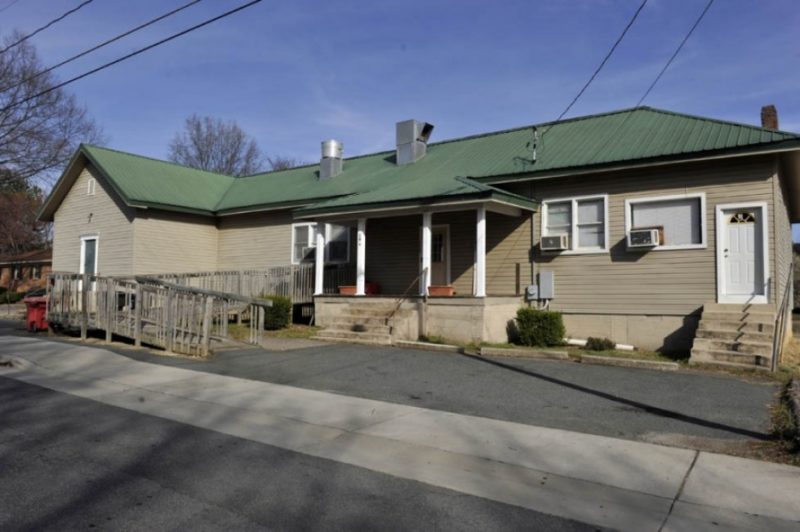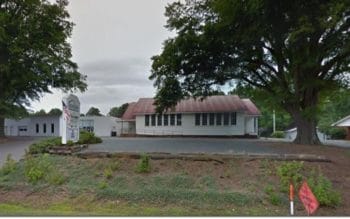DAVIDSON HISTORY
Rosenwald Schools: Special Davidson History Column for Black History Month

Former Rosenwald School Located in Cornelius’s Smithville Community
(Thanks to our Davidson History Columnist, Nancy Griffith, News of Davidson is proud to publish this important piece of history to honor Black History Month.)
In the early 20th century, education for African Americans in the south was chronically underfunded and woefully inadequate. During this period, Tuskegee Institute president Booker T. Washington and Julius Rosenwald, who was part owner and president of Sears Roebuck, developed a plan to remedy the situation. The Julius Rosenwald Foundation provided seed money to build schools across the South. Local community members supplied matching funds, and white townspeople were required to contribute either funds or labor. Local school boards were asked to maintain and operate the schools.
The program began around 1917, and schools were built until 1932. According to the National Trust for Historic Preservation, the foundation spent more than $4 million to build almost 5,000 schools in fifteen states, stretching from Maryland to Texas. In addition, African-American communities contributed more than $4.7 million to further the effort, often donating land and labor, in addition. This project has been called “the most important initiative to advance education” during the early 20th century, and schools placed students “at the vanguard of education for southern African-American children.”
The schools were sturdily built, and were constructed according to the latest educational principles. The Foundation provided plans for different-sized buildings that would employ anywhere from one to seven teachers. The architecture, the location of the teacher’s desk and blackboard, and even the paint schemes were prescribed by the Foundation. Schools were also provided with plans for teachers’ houses, industrial buildings, and even privies. Like most rural southern schools, education continued only through the eighth grade. Some schools offered classes in farming and home economics in addition to academic work so students would be prepared for future employment. According to the National Trust, by 1928 one-third of African-American children in the south were attending Rosenwald Schools. Eight hundred such schools were built in North Carolina, the most built in any state. There were approximately 25 such schools in Mecklenburg County.

Former Rosenwald School Located in Caldwell, now home to Burgess Supply
Although Davidson itself did not have a Rosenwald School, there were several nearby, including two schools in Huntersville, one in Cornelius, one on Poplar Tent Road near the Cabarrus County line, and one in the Caldwell community. According to information from the Tuskegee Institute, the first school in Huntersville was built by the Institute itself, without the aid of the Foundation. This school, built between 1920 and 1921, was a three-teacher school. A second school, which still stands near the intersection of NC 115 and Holbrooks Road, was built five years later in the Pottstown neighborhood of Huntersville. It was either a three- or four-teacher school and was built at a cost of $1,445. In later years, the building was remodeled, and does not preserve its historic integrity.
The Caldwell School, located at 15435 Highway 73 in Lemley township, was a four-teacher school built between 1924 and 1925. This school was better funded, with the Rosenwald Foundation alone contributing $1,100. It was closed sometime around 1951, when the school district decided to consolidate the various African American schools in the county into “Negro union” schools. The building was purchased from the school district in 1953, and now houses Burgess Supply Co. It is not a designated historic landmark.
The school closest to Davidson was located on South Hill Street in the Smithville Community in Cornelius. Built between 1922 and 1923, it was a three-teacher school and cost $4,000 to build. Former students remember that there were two grades in each class, they used a two-seat privy, and the program consisted of a daily devotion, classes, recess, lunch, and then more classes in the afternoon. There were split sessions, so that children could help with planting and harvesting. According to a February 21, 2011 article in the Charlotte Observer, one student who attended in the 1930s recalled that he and his friends would jump out of the windows in the back of the building, if they wanted to leave early. When the school district consolidated black schools in the early 1950s, students from Smithville and Caldwell schools were reassigned to the Davidson Colored School, later known as the Ada Jenkins School. In 1954 the Smithville building was bought by five community members and was used as the Better Community Club, “which housed everything from a barber shop to a vaccination clinic. Back then, everything happened at the center. It brought the community together.” Milton Howard bought the building in the early 2000s, and Cornelius resident Nannie Potts ran summer recreational camps at the site until the condition of the building and the cost of rent made it prohibitive. The Smithville School was designated a historic landmark in 2006.
The other Rosenwald School near Davidson was the Lytle’s Grove school, located on NC 73 and Poplar Tent Road, near the Cabarrus County line. This three-teacher school was built between 1927 and 1928. The school closed in 1952, and the building may survive as part of a church currently located on the site.
Today only 11 per cent of the buildings built by the Rosenwald Foundation survive; only seven of the approximately 25 in Mecklenburg County are still in existence. Fortunately, some communities in North Carolina are beginning to recognize the significance of these schools, and are making attempts to save and restore them.
(Photos are courtesy of the Fisk University Rosenwald Fund database.)
Nancy Griffith
Nancy Griffith lived in Davidson from 1979 until 1989. She is the author of numerous books and articles on Arkansas and South Carolina history. She is the author of "Ada Jenkins: The Heart of the Matter," a history of the Ada Jenkins school and center.


